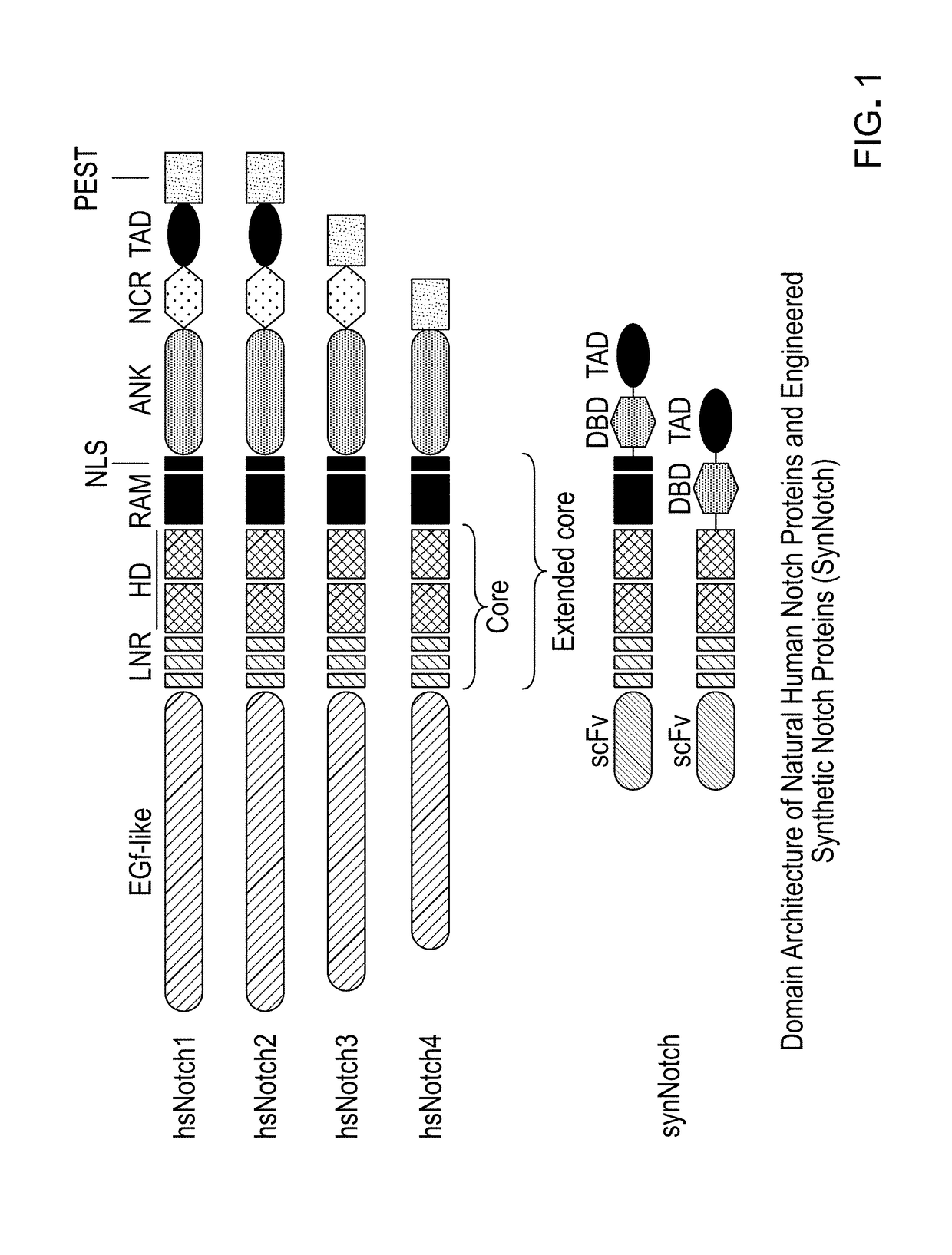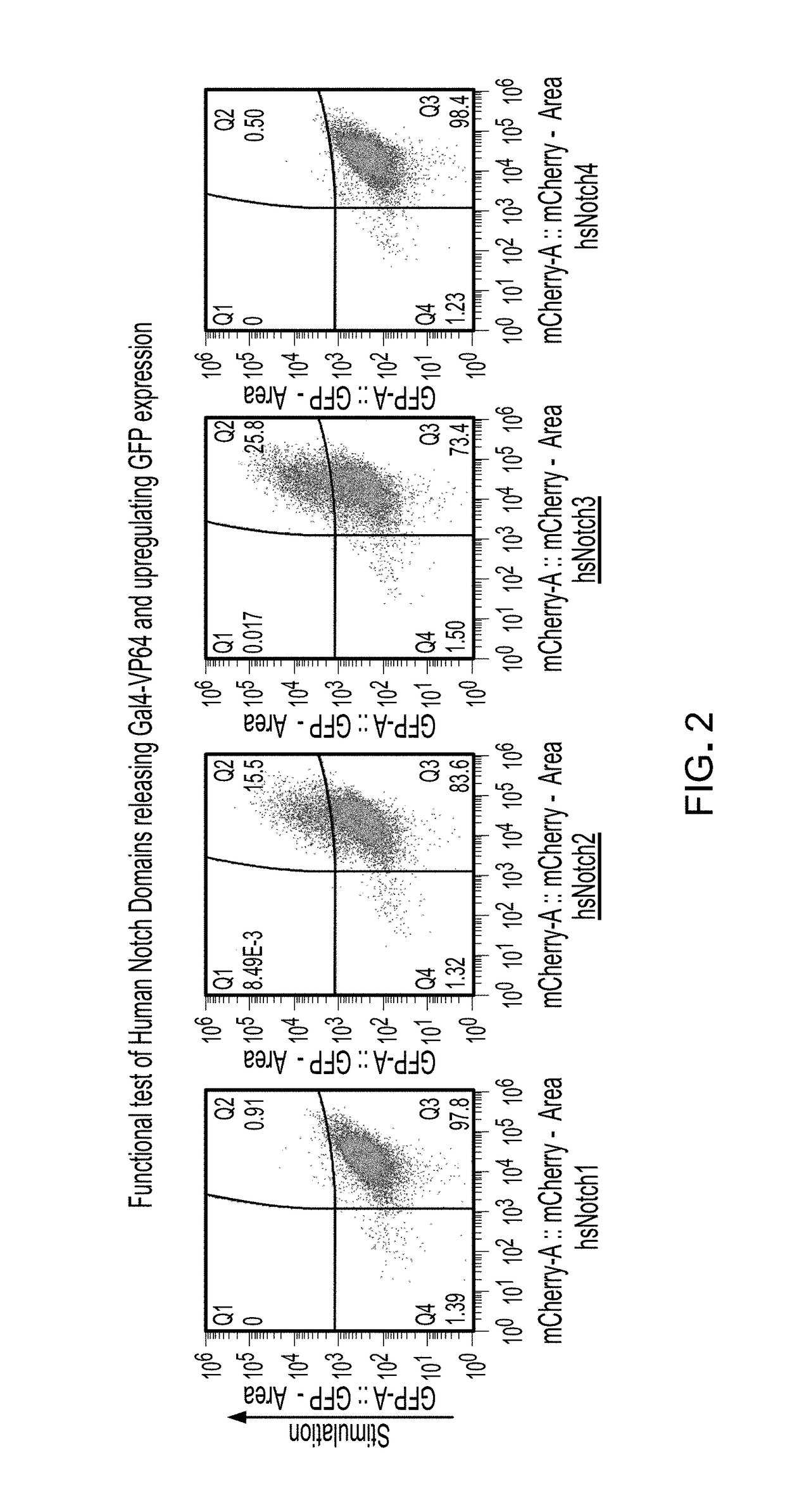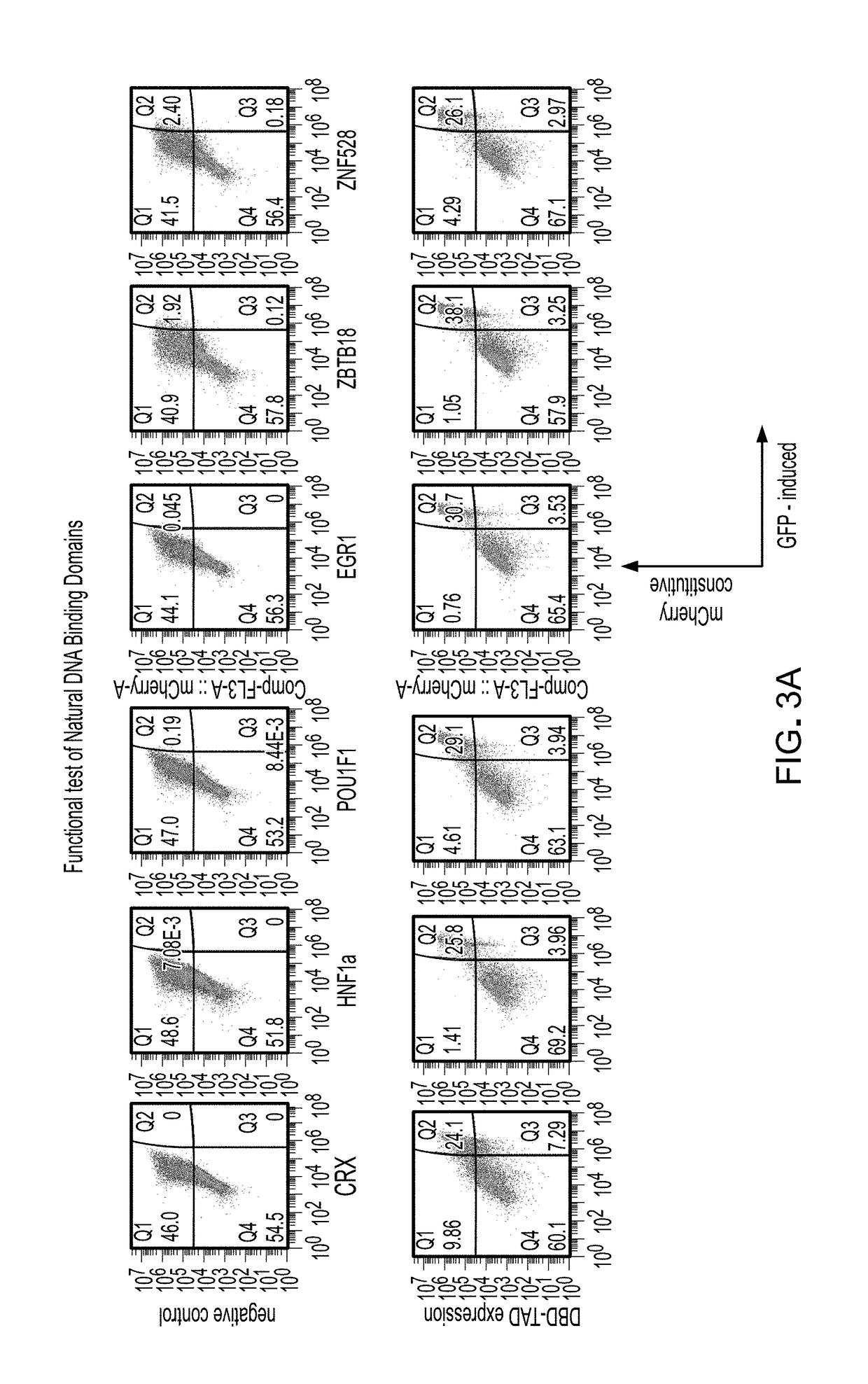Methods and compositions for reducing the immunogenicity of chimeric notch receptors
- Summary
- Abstract
- Description
- Claims
- Application Information
AI Technical Summary
Benefits of technology
Problems solved by technology
Method used
Image
Examples
example 1
ion of Chimeric Notch with Notch3, DNA Binding Domain of HNF1alpha and p65 Transactivation Domain
[0110]The following sequences were ordered as double-stranded synthetic DNA fragments (IDT gBlocks) or single-stranded long-oligonucleotides (IDT ultramers) which were made double-stranded by annealing with a short 3′ reverse-complement oligo and second-strand synthesis by Phusion polymerase (Thermo Scientific™ Phusion™ High-Fidelity DNA Polymerase; Catalogue No. F534S).
[0111]Four synthetic dsDNA pieces were ordered from Integrated DNA Technologies (IDT) containing:[0112]1. Human CD8a signal peptide 1-22 (NP_001139345 amino acids 1-22, (MALPVTALLLPLALLLHAARPS) (SEQ ID NO: 1)), Myc-tag (EQKLISEEDL) (SEQ ID NO: 2), Anti-Human B cell (CD19) Antibody, clone FMC63.[0113]2. Human Notch3 core (gi|134244285|NP_000426.2 amino acids 1374-1734).[0114]3. GS flexible Linker (GSAAAGGSGGSGGS) (SEQ ID NO: 3), Human HNF1alpha (gi|807201167|NP_001293108.1 amino acids 1-283), GS flexible Linker (GGGSGGGS) ...
example 2
ion of Chimeric Notch with Notch3, DNA Binding Domain of EGR1 and p65 Transactivation Domain
[0129]Vector construction was similar to that of Example 1 with the exception that the synthetic DNA fragment containing the DNA-binding domain of human HNF1α was substituted for the following containing the human EGR1 DNA-binding domain:[0130]GS flexible Linker (GSAAAGGSGGSGGS) (SEQ ID NO: 3), Human EGR1 (genbank NP_001955 amino acids 333-423), GS flexible Linker (GGGSGGGS) (SEQ ID NO: 4)
[0131]The reporter construct contained a cognate 4× binding site a 5× repeated DNA binding sequence for the EGR1 DNA-binding domain dimer, immediately followed by a minimal CMV promoter:
(SEQ ID NO: 34)acccggggggacagcagagatccagtttatcgatGCGTGGGCGataGCGGGGGCGtatGCGTGGGCGattGCGGGGGCGttaGCGTGGGCGactagttag
example 3
ion of Above Examples with WWTR1 (TAZ) Transactivation Domain
[0132]Vector construction was identical to that of Example 1&2 with the exception that the synthetic DNA fragment containing the transactivation domain of human RelA(p65) was replaced by the following containing the transactivation domain of human WWTR1:
[0133]Human WWTR1(TAZ) (Genpept NP_056287.1 amino acids 165-395) plus stop codon.
PUM
 Login to View More
Login to View More Abstract
Description
Claims
Application Information
 Login to View More
Login to View More - R&D
- Intellectual Property
- Life Sciences
- Materials
- Tech Scout
- Unparalleled Data Quality
- Higher Quality Content
- 60% Fewer Hallucinations
Browse by: Latest US Patents, China's latest patents, Technical Efficacy Thesaurus, Application Domain, Technology Topic, Popular Technical Reports.
© 2025 PatSnap. All rights reserved.Legal|Privacy policy|Modern Slavery Act Transparency Statement|Sitemap|About US| Contact US: help@patsnap.com



